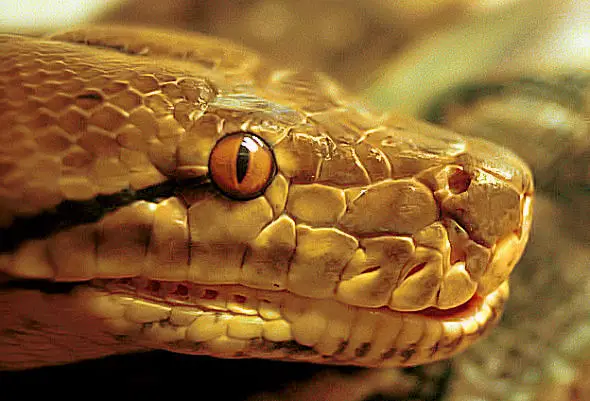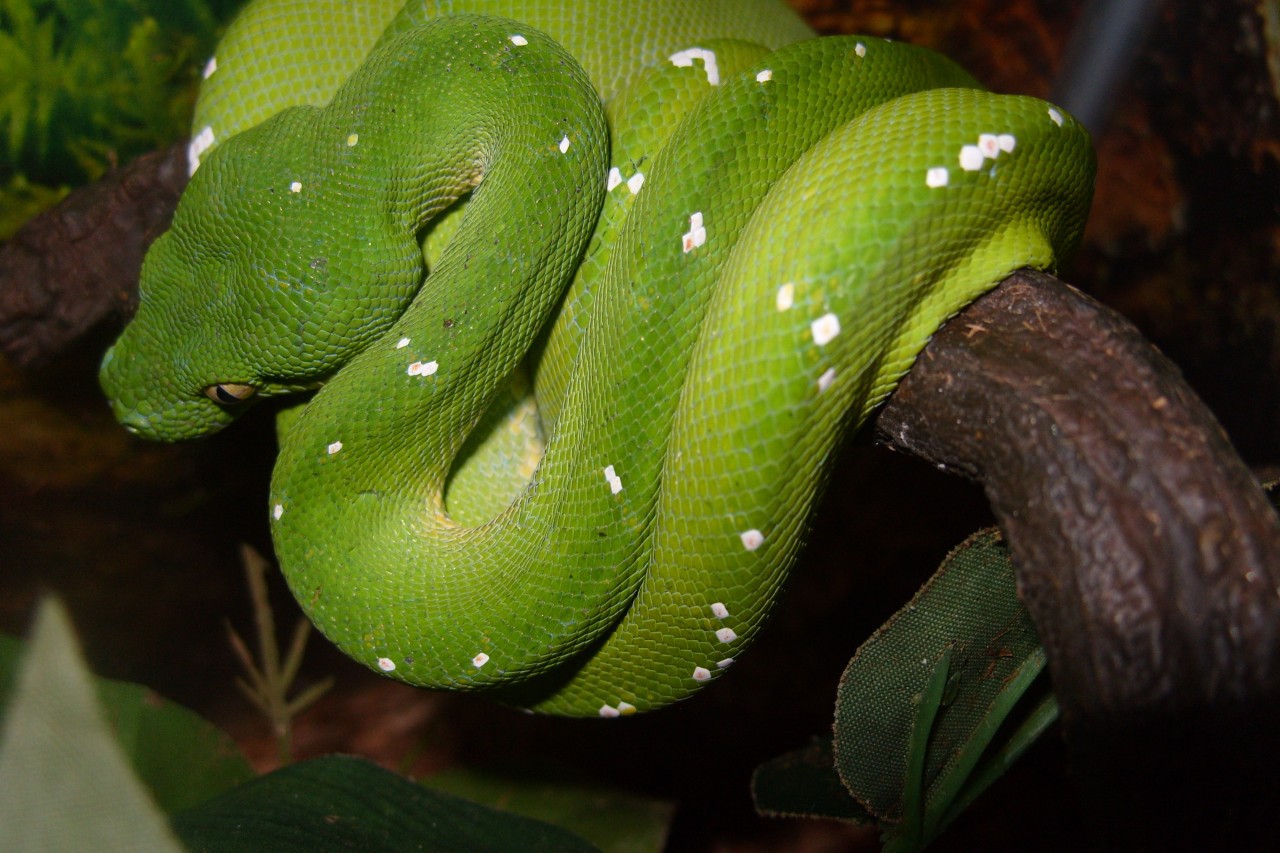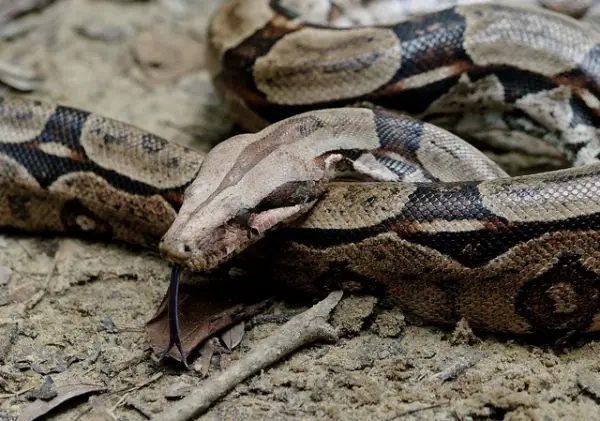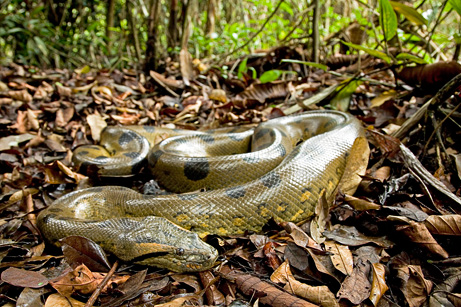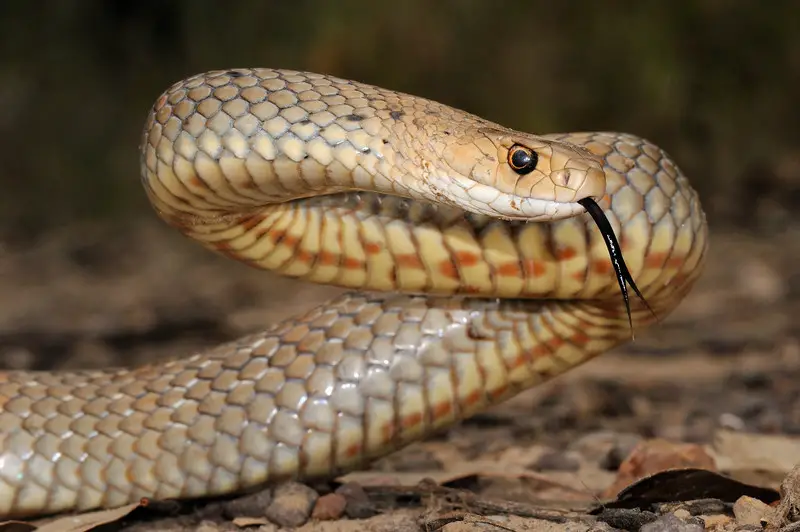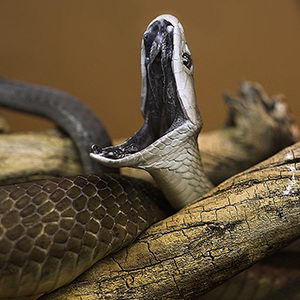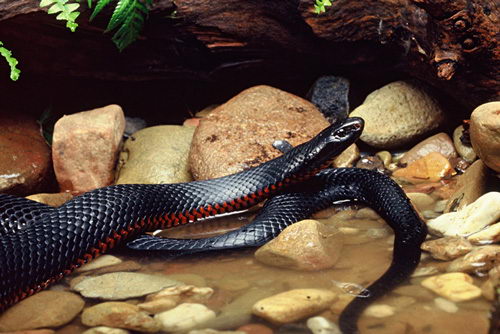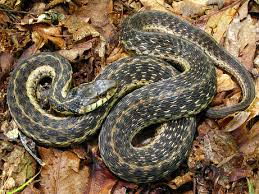Tag: Snake
-
Top 4 Most Dangerous Snakes That May Be Lurking In Your Home
Snakes aren’t the ideal pets for a lot of people. Although many of these reptiles are relatively docile, some snakes are worth calling professional animal control services. So, the first step to preventing unfortunate incidents involving these “serpents” from taking place is to differentiate the aggressive and poisonous breeds from their peaceful cousins. Continue reading…
Written by
-
Reticulated Python Facts | The World’s Longest Snake
The reticulated python (Python reticulatus) is the world’s longest and one of the heaviest snake species. While python is nonvenomous it is nevertheless dangerous to humans having been involved in quite a few incidents. The most recent one occurred in March 2017 in Indonesia where a 23-foot reticulated python killed and swallowed a 25-year-old farmer.…
Written by
-
Green Tree Python Facts | Anatomy, Diet, Habitat, Behavior
The green tree python (Morelia viridis) is a unique python with the green color body and a prehensile tail. It is typically found in the New Guinea and the adjacent islands. While green pythons regularly climb up the trees they do prowl on the ground at night. Should they remain in trees all the time…
Written by
-
Boa Constrictor Facts | Anatomy, Diet, Habitat, Behavior
The boa constrictor (Boa constrictor) is a large to medium-size snake that is typically found in the forests of South America. It is one of the least understood snake species. Boas do extremely well in zoos and thus they are widely bred in captivity worldwide. Biologists have yet to assess boa’s behavior in the wild.…
Written by
-
Green Anaconda Facts | Anatomy, Diet, Habitat, Behavior
The green anaconda (Eunectes murinus) is by far the largest of the anaconda species. It is also one of the few snakes that have the longest lifespans. The anaconda is completely non-venomous boa species and is typically found in South America. Green anacondas are also known as ‘common anaconda’ and ‘water boa’. Green Anaconda Facts…
Written by
-
Eastern Brown Snake Facts | Anatomy, Diet, Habitat, Venom
The eastern brown snake (Pseudonaja textilis) is one of the deadliest snakes in the world—second only to Belcher’s sea snake. The snake is a native species of Papua New Guinea, Australia, and Indonesia. It was discovered in Papua New Guinea back in 1953 but biologists have yet to understand how he got there. Eastern Brown Snake…
Written by
-
King Snake Facts | King Snake Diet, Habitat, Behavior
King snake is a nonvenomous species belongs to the genus Lampropeltis and it includes four species and 45 subspecies. The king snakes also make very good pets. So if you are considering to have them as pets then it is better to know them first through these King Snake Facts. Common king snake is one of the…
Written by
-
Black Rat Snake Facts | Largest Snake in Michigan
The black rat snake (Elaphe obsoleta obsolete) is a medium-sized snake with the white chin and throat. It has all black and shiny skin. The black rat snake is the largest snake in Michigan State. Get to know this black snake through these informative black rat snake facts. It is amongst the most common snakes…
Written by
-
Black Mamba Snake Facts | Mamba Diet, Habitat, Behavior
The Black mamba (Dendroaspis polylepis) is one of the fastest snakes in the world with the recorded speed of 7 miles per hour (11 km/h). These African snakes are feared for their amazing speed and deadly venom. They are active in most part of the day. Mambas are known to sun themselves before they go…
Written by
-
Ball Python Facts | The Smallest Python
Ball python (Python regius) is an absolutely non-venomous species. It is native to equatorial western Africa. Ball python is by far the smallest python species and is quite good at making pet. Royal python and West African python are the other names of ball python. The closest relative of ball python is Angolan python which…
Written by
-
Red Belly Black Snake Facts | The Australian Snake
The Red bellied black snake (Pseudechis porphyriacus) is commonly found in Australia including New South Wales, rural Victoria, and Queensland. It makes its habitat in regions that are abundant in water bodies such as creeks, lakes, waters, and some swamps and rivers. It is characterized by its shiny dorsal surface along with its unique reddish…
Written by
-
What Do Pythons Eat in the Wild | Pythons Diet
Pythons are largely ambush hunters and they feed on vertebrate prey. Pythons find active way of foraging. The bulk of small python’s diet is composed of lizards. However as the size of the python increases, it begins to rely more on mammals for consumption. While they do not often consume birds pythons are known to…
Written by
-
Corn Snake Facts | Rat Snakes of America
Corn snakes are small rat snakes of North America. They live in the central and southeastern United States. Rat snakes are recognized by their red spots with black edges down the middle of the back, together with their orange to yellowish body. Their belly is marked by black and white stains in alternating rows. There…
Written by
-
What Do Garter Snakes Eat | Garter Snakes Diet
Like other snakes, garter snakes are highly opportunistic feeders. They will eat a wide variety of insects and invertebrates including amphibians. In captivity, they are fed with different animals but mice are the best foods for garter snakes. If you’re feeding your garter snake with mice then there is no need to feed anything because…
Written by
-
Facts About Snakes For Kids | Snake Diet & Habitat
How many times have you come across all these fun facts about snakes for kids? These interesting facts include snake diet, habitat, reproduction and behavior. Snakes are the carnivorous reptiles belong to the suborder Serpentes and can be easily recognized from their legless features together with an elongated body. These reptiles have no external ears…
Written by


